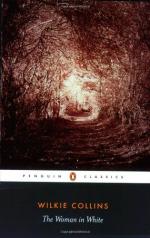“To every word of it,” she answered.
“I will not plead out of my own heart,” I went on; “I will not appeal to the love which has survived all changes and all shocks— I will rest my only vindication of myself for thinking of her, and speaking of her as my wife, on what I have just said. If the chance of forcing a confession from the Count is, as I believe it to be, the last chance left of publicly establishing the fact of Laura’s existence, the least selfish reason that I can advance for our marriage is recognised by us both. But I may be wrong in my conviction—other means of achieving our purpose may be in our power, which are less uncertain and less dangerous. I have searched anxiously, in my own mind, for those means, and I have not found them. Have you?”
“No. I have thought about it too, and thought in vain.”
“In all likelihood,” I continued, “the same questions have occurred to you, in considering this difficult subject, which have occurred to me. Ought we to return with her to Limmeridge, now that she is like herself again, and trust to the recognition of her by the people of the village, or by the children at the school? Ought we to appeal to the practical test of her handwriting? Suppose we did so. Suppose the recognition of her obtained, and the identity of the handwriting established. Would success in both those cases do more than supply an excellent foundation for a trial in a court of law? Would the recognition and the handwriting prove her identity to Mr. Fairlie and take her back to Limmeridge House, against the evidence of her aunt, against the evidence of the medical certificate, against the fact of the funeral and the fact of the inscription on the tomb? No! We could only hope to succeed in throwing a serious doubt on the assertion of her death, a doubt which nothing short of a legal inquiry can settle. I will assume that we possess (what we have certainly not got) money enough to carry this inquiry on through all its stages. I will assume that Mr. Fairlie’s prejudices might be reasoned away—that the false testimony of the Count and his wife, and all the rest of the false testimony, might be confuted— that the recognition could not possibly be ascribed to a mistake between Laura and Anne Catherick, or the handwriting be declared by our enemies to be a clever fraud—all these are assumptions which, more or less, set plain probabilities at defiance; but let them pass—and let us ask ourselves what would be the first consequence or the first questions put to Laura herself on the subject of the conspiracy. We know only too well what the consequence would be, for we know that she has never recovered her memory of what happened to her in London. Examine her privately, or examine her publicly, she is utterly incapable of assisting the assertion of her own case. If you don’t see this, Marian, as plainly as I see it, we will go to Limmeridge and try the experiment to-morrow.”




